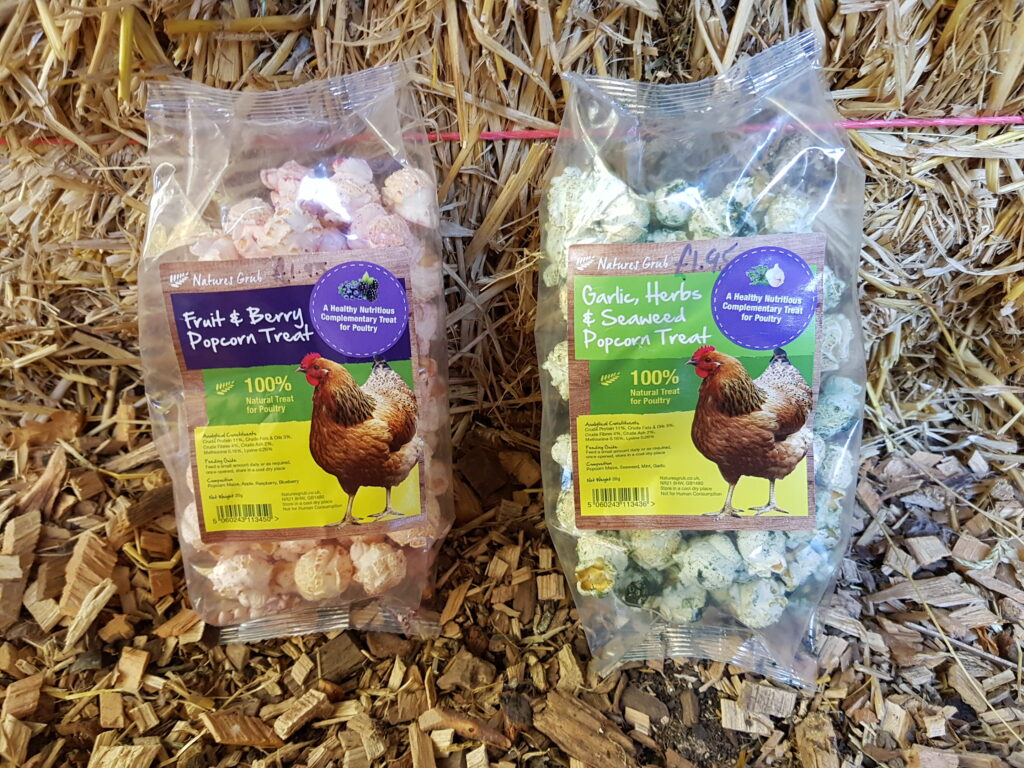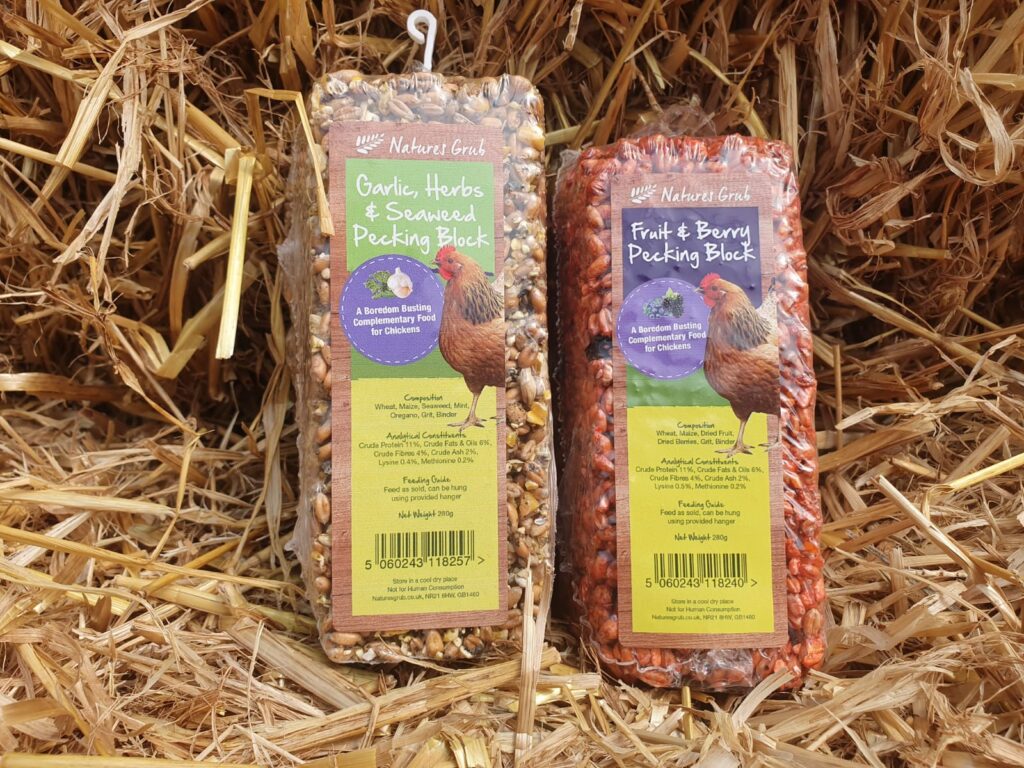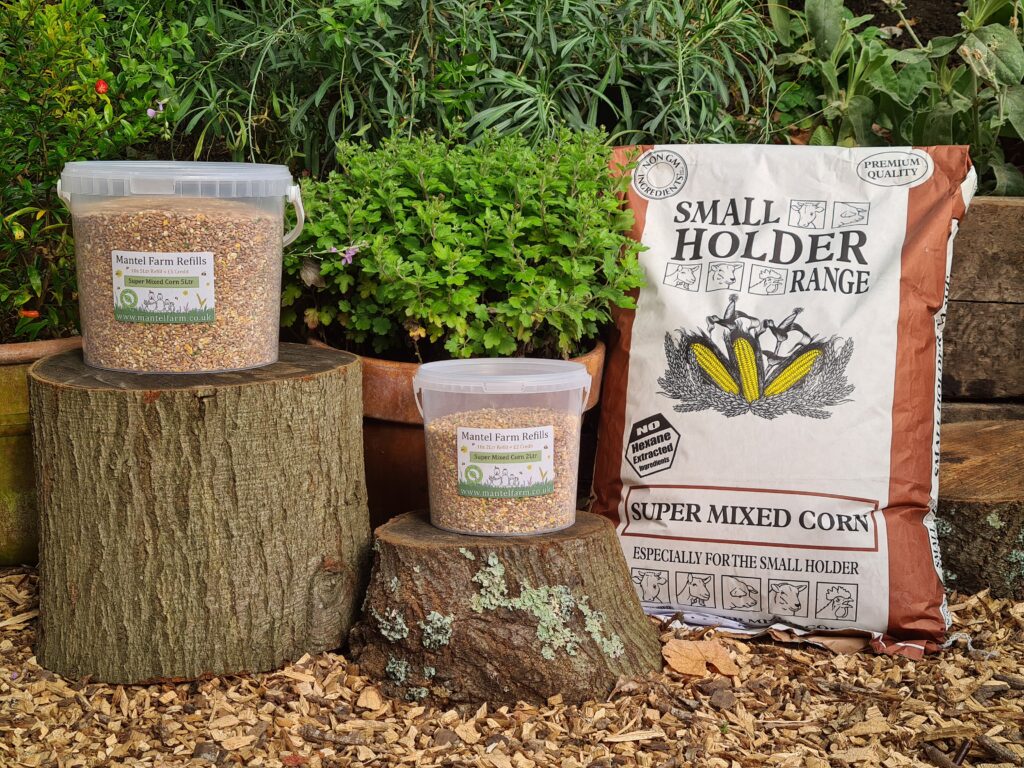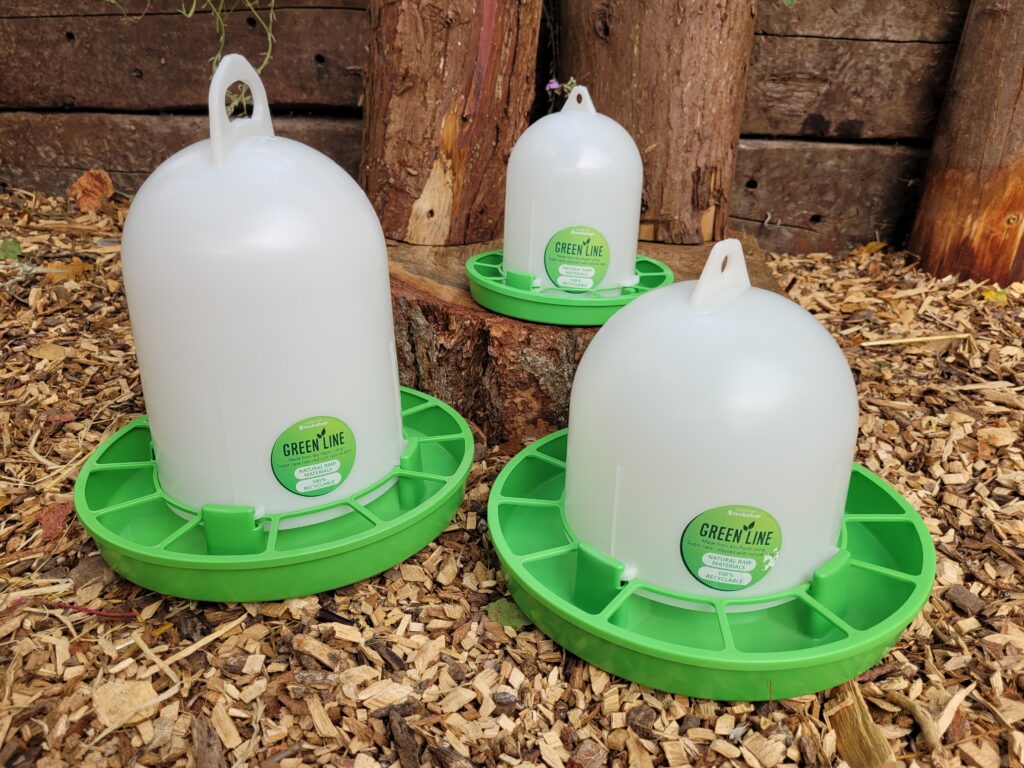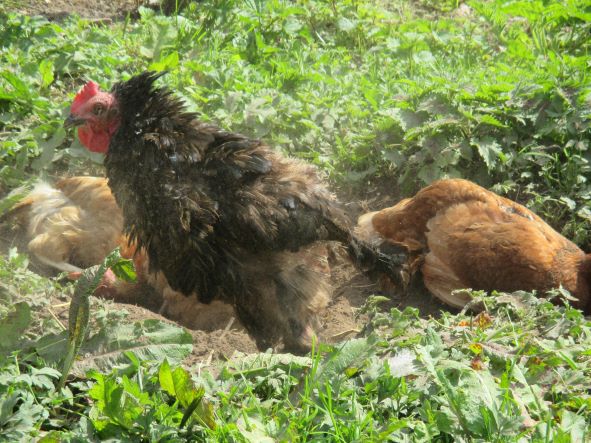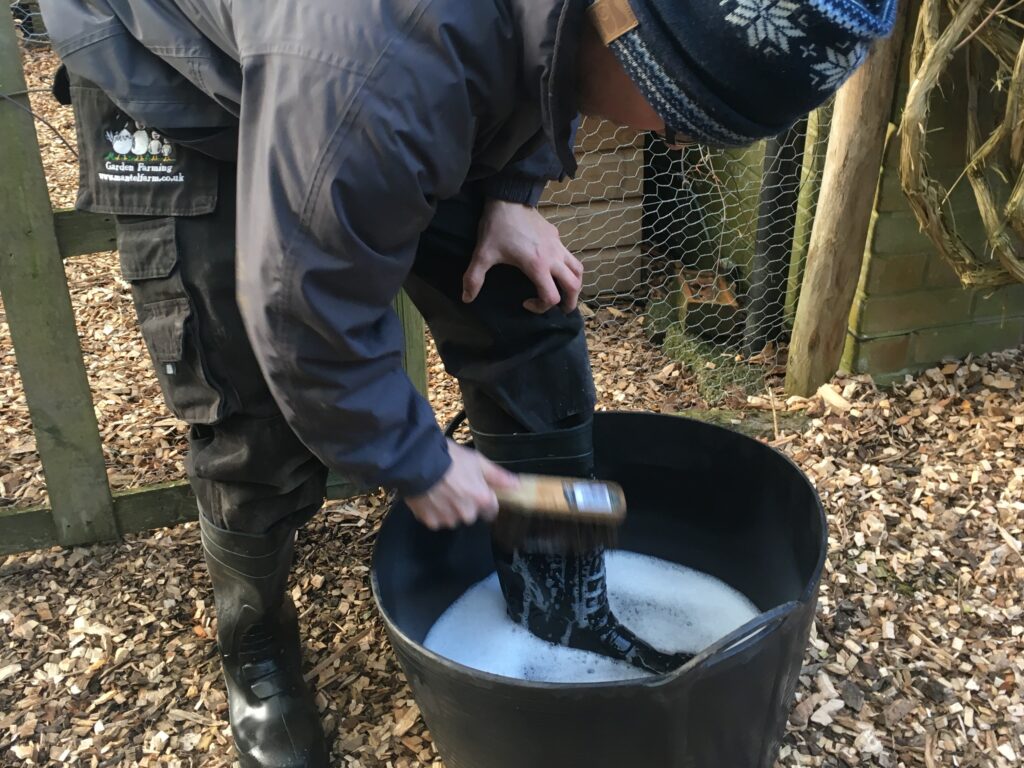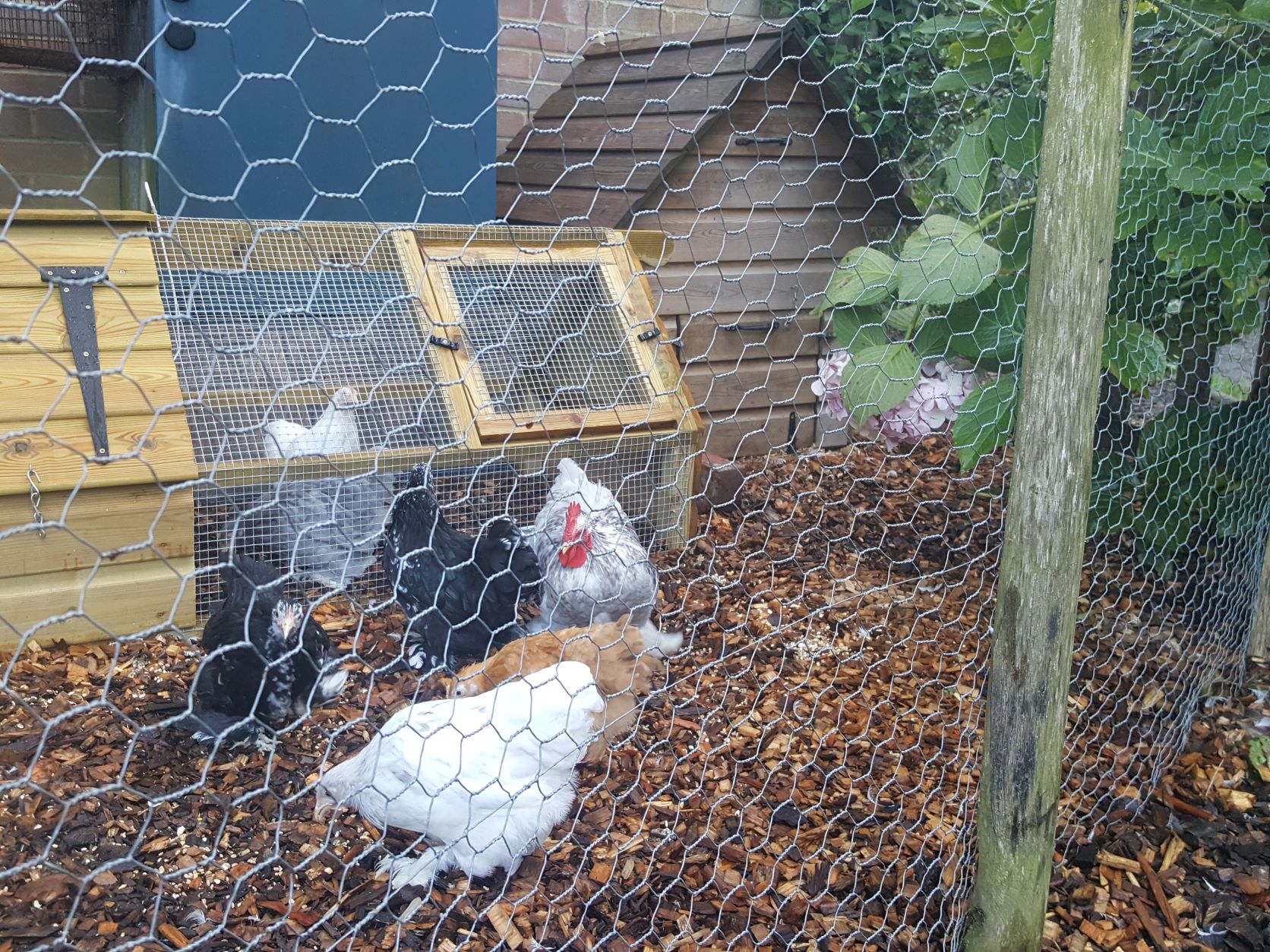
If you have never introduced new birds into an existing flock please be aware it is not easy! you certainly can’t just add them all in together and let them get on with it – although they may sort themselves out, it will probably not be in the way, or with the result you wished. If it works straight away it is pure luck, it is totally unfair on the welfare of the new birds being introduced.
However with a little planning and work it is possible to introduce new hens to an existing flock, and we hope the following tips will help:
Quick Check List:
- A division between introduced groups is always best, as long as they can see each other. A divided pen works well for the first few weeks.
- Night time introductions can give you a head start, always be there to supervise for the first few days if not using a divided pen.
- Introductions where there is an existing cockerel, or introducing a cockerel at the same time can help.
- Jumble up the outside space, ie: move feeders and drinkers to new locations, even if only temporarily, to confuse the existing birds and give cover to the new.
- Consider adding additional feeders and drinkers to prevent existing birds ‘guarding’ them as existing birds often stop the new ones feeding.
- Make the outside space as big as possible, introductions are a great deal easier the bigger the space.
- Avoid introducing a lone bird to an existing flock, introduce two or three where possible. If unavoidable, follow the advice carefully and give as much time as you can.
- Provide plenty of treat food to distract birds from each other, for instance, scatter mixed corn (more than usual), maybe hang up a cabbage.
- Avoid introducing birds of vastly different sizes.
- Do not try to introduce birds of vastly different ages.
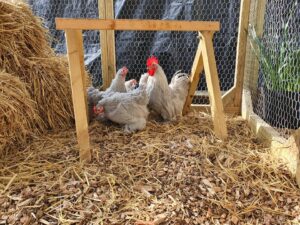
Introducing Birds Help and Advice:
When introducing new birds they go though a natural process of establishing who’s in charge (topdog), and who’s not (underdog). This is the case whether we are talking about just two birds or twenty-two! Even if you are down to just one chicken, (who is fairly mature/old,) and you would like to introduce a friend, initially you will be buying it an enemy, not a friend! The ‘friend’ bit will hopefully come in time, but it will take some work on your part.
Existing birds are extremely territorial to their space, in addition, often senior to the generally younger newer birds coming in. Often stand up fighting will be witnessed, as sometimes one of the newcomers will be of strong character and will not submit to the existing bird. This fighting mimics fighting amongst cockerels, kicking with feet, with head and comb pecking.
‘The pecking order’ really does say it all, it is common to see the more dominant birds pecking the weaker ones to the back of the head/neck to say ‘I’m in charge’. This can progress to pecking other areas of the body, though this is usually a sign of things starting to go wrong. Pecking usually falls into two categories: i) ‘annoyance pecking’ – eg, ‘I’m annoyed you are in my pen, but as long as you submit to me we could be friends’, then, ii) ‘malicious pecking’ – ‘I’m far from happy about this situation, and I’m possibly just not going to accept you’. The latter does need to be spotted as sometimes this can lead to serious injury to the newcomer, and often, once injured, the hen is then ganged up on by several if not all of the existing birds. In fact, if blood is drawn, the injured bird must be removed from the pen, and not reintroduced until the injury is no longer visible (healed & re-feathered). This is critical, if the injured bird remains in the pen what follows is often horrific; most, if not all poultry are attracted to blood, and will continue to peck at the injury until the poor bird dies.
We all obviously hope for the ideal world where just the expected ‘annoyance pecking occurs, the pecking order is established, everyone’s friends, and we all live happily ever after! If you manage it right, that can be achieved but is definitely not a foregone conclusion. Before the introduction, you should always have a contingency plan, prepared and ready to go. This would normally consist of a way to divide up the outdoor pen, so they can still see each other, but cannot make contact. A reasonably fine wire mesh or sheet of clear Perspex will do the trick.
Dividing your pen:
The route and method we recommend everyone takes is to introduce slowly via either a divided pen, a smaller pen within a large pen, or a pen next to a pen. This enables groups of birds (could even be more than two groups,) to see each other and get used to each other’s presence without the possibility of any harm being inflicted. It is true of course, that at some point in time they will have to be allowed into the same space together, if that is the ultimate intention, and still, ‘the pecking order’ will have to be established. The longer they are kept apart like this, the easier the final introduction is, so try not to be in a rush! We advise a minimum of two weeks ‘seeing each other’, though again, longer is always better. When you do try them in together, they will still need supervision, and you may need to part them up again, try again every week to two weeks until successful. You do not need a divided or additional coup within the run if you are dividing just one outdoor pen. The birds will always roost up together after dark, they seem to call some sort of ‘truce’! Although it is worth pointing out that they must remain in total darkness until you are there in the morning to let them out and part them up again, so temporarily block up any windows or such like that will let in the light.
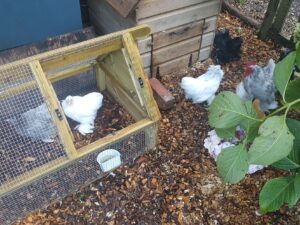
Introducing Birds at night:
Introducing birds at night once completely dark will give you a head start, but is not in itself sufficient. The theory is that the birds have some time shut in the house together to get used to each other’s smell and presence. Such introductions should always be done on an evening when you are there the next day to give fairly constant supervision once they are let out into the outdoor enclosure. Letting them out and going off to work is really not a good plan! A good several days’ close supervision will be required to ensure the safety of the new birds.
During the Autumn and Winter months, the daylight hours are shorter, the ‘truce’ times are longer!
Consider a Cockerel:
Although not always possible, introductions where there is an existing cockerel, or introducing a cockerel at the same time can really help. A Cockerel can greatly reduce the pecking order amongst hens, if he is of sufficient breed and standing he will be the one in charge, and break up any squabbling amongst the girls before it becomes a problem.
Make some changes:
Jumble up the outside space, ie: move feeders and drinkers to new locations, even if only temporarily, add tree branches, sections of bushes, old cardboard boxes on their sides, anything to confuse the existing birds and give cover to the new. Add additional feeders and drinkers to prevent existing birds ‘guarding’ them, as existing birds often stop the new ones feeding, and make the outside space as big as possible, introductions are a great deal easier the bigger the space. At the moment of introduction provide plenty of treat food to distract birds from each other, for instance, scatter mixed corn (more than usual), maybe hang up a cabbage (always hang, and just above head height, this slows them down – gives them more to do).
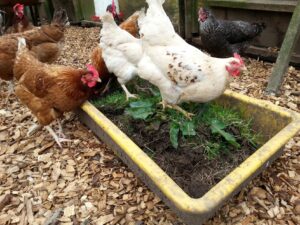
Things to avoid:
Avoid introducing a lone bird to an existing flock, introduce two or three where possible. If unavoidable, follow the advice carefully and give as much time as you can. Avoid introducing birds of vastly different sizes, although anything is possible, it will give you far more work on the supervision side! (Also take note, a larger breed cockerel may still try to mount a bantam hen, it’s instinct!), Finally, do not try to introduce birds of vastly different age, the closer match of age and size, the easier the introduction, the only exception being when the young birds have been hatched on site and/or been reared up for much of their time in full view of the adult birds, even then tread very carefully!
A Quarantine period:
If your new birds are from a new source, you should always provide a quarantine period. Keeping the flocks apart to ensure they remain healthy (health and vaccinations etc) before introducing possible problems to your existing flock.



